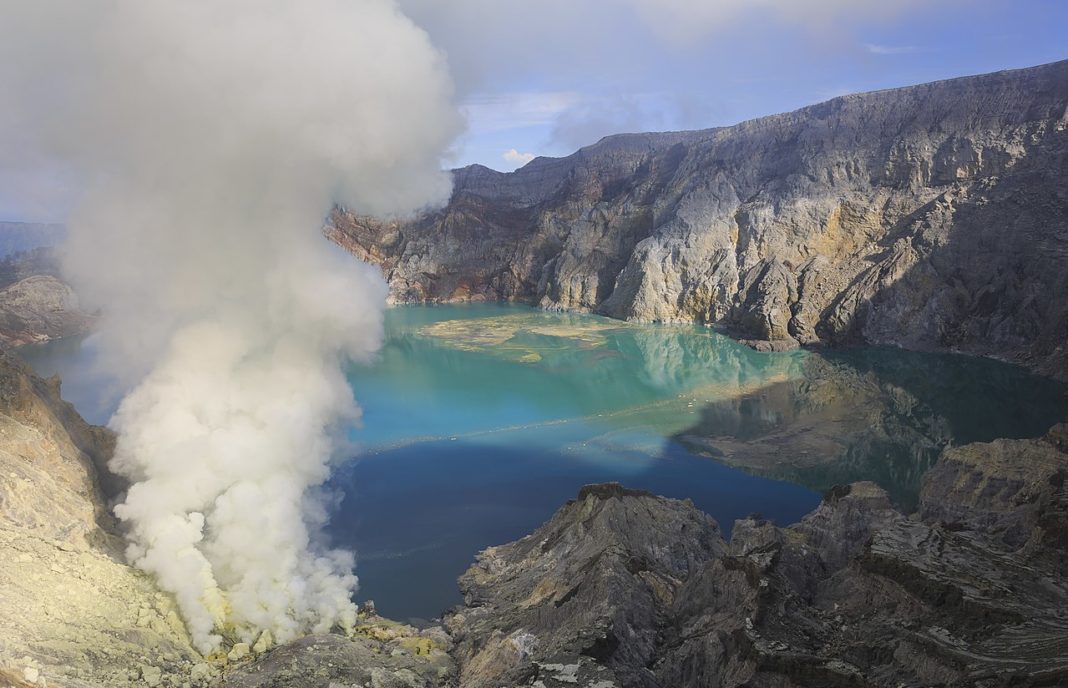Ijen plateau, also known as ‘Kawah Ijen’ is highly recommended for nature enthusiasts and hikers. The Plateau was at one time a huge active crater, 134 sq km in area. Ijen is a quiet but active volcano, and the landscape is dominated by the volcanic cones of Ijen and Merapi on the northeastern edge of the Plateau, and Raung on the southwestern corner.
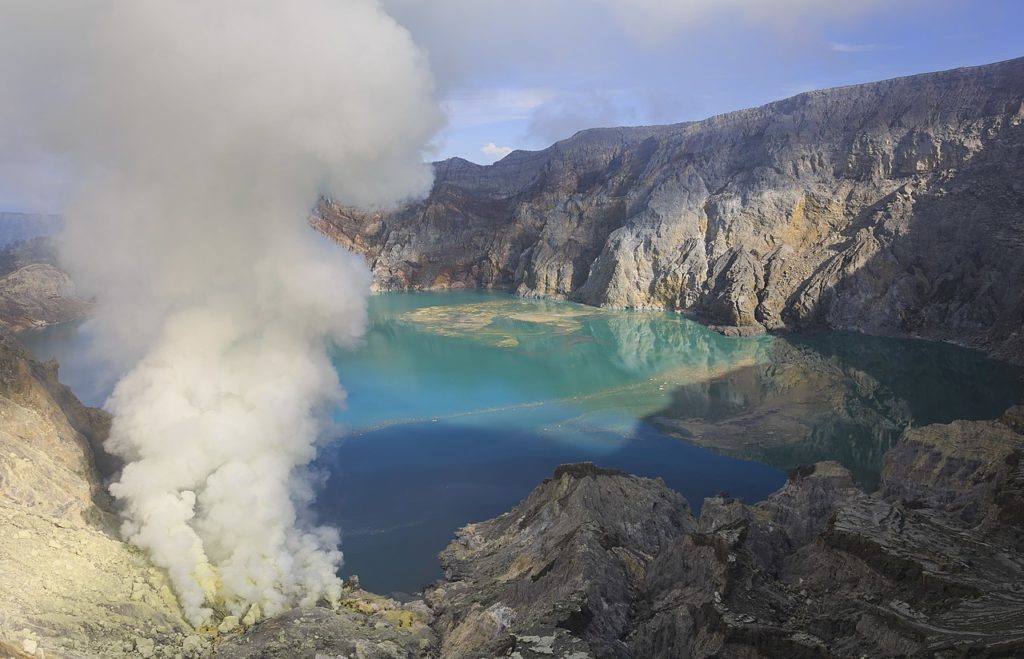
Kawah Ijen Volcano, on the island of Java, Indonesia has two of the most unusual occurrences on Earth. The first is an active solfatara that emits hot, flammable sulfurous gases. These ignite as they enter Earth’s oxygen-rich atmosphere and burn with an electric blue flame. The flames are difficult to see during the day but illuminate the landscape at night.
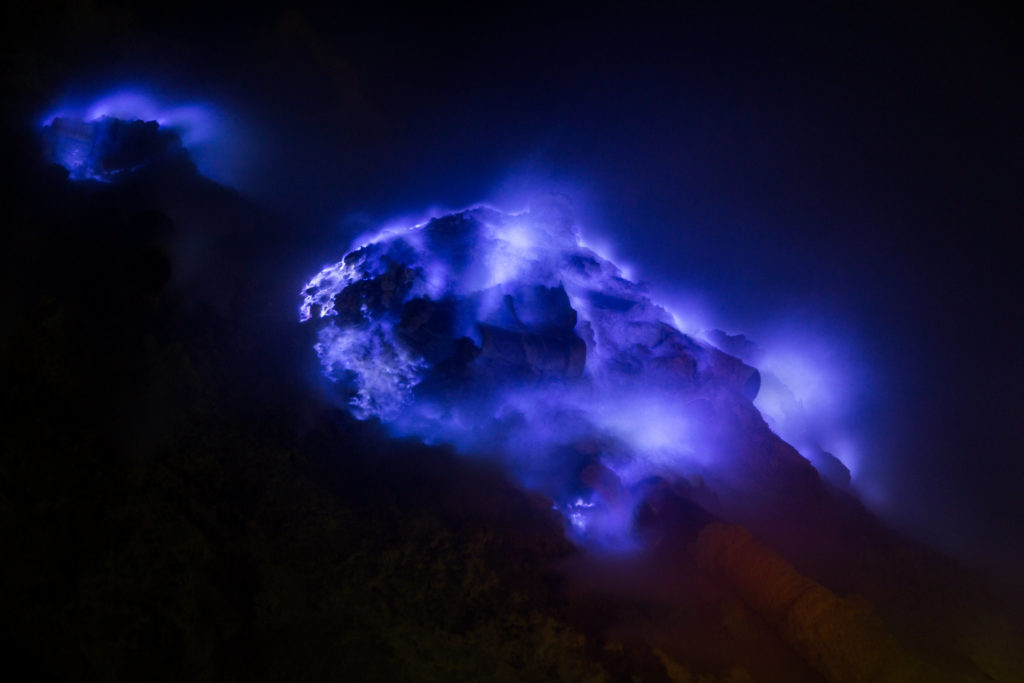
This produces a renewable deposit of mineral sulfur that local people mine and carries to a local sugar refinery that buys it. The pipes route the sulfur gases down the vent’s sloping mound.
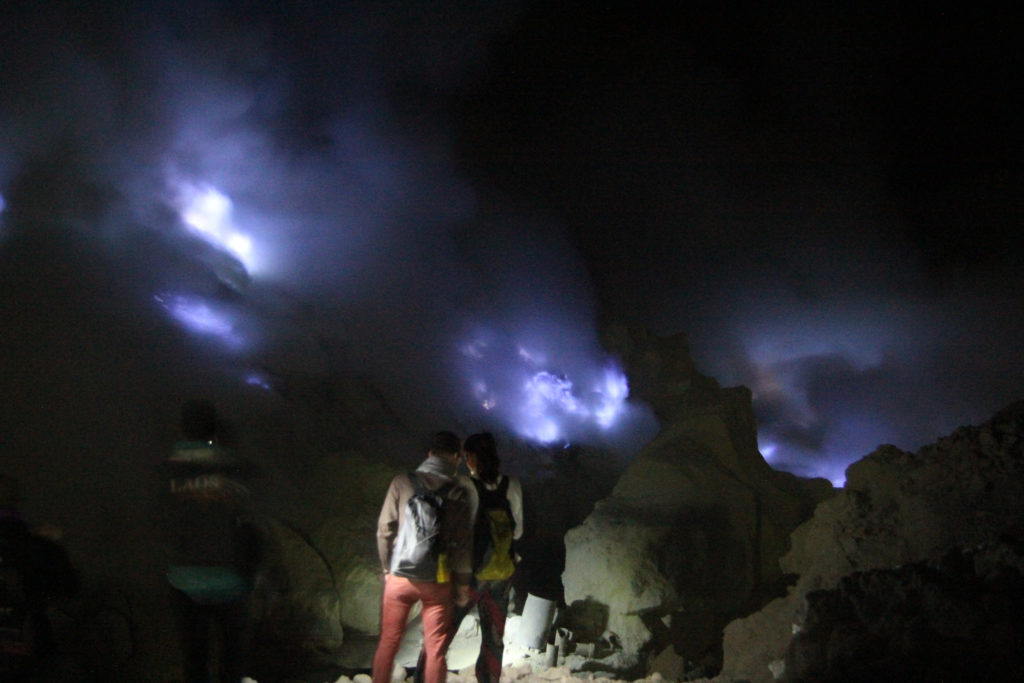
When the gases cool, they condense into liquid sulfur, which then flows or drips from the pipes and solidifies into hard sulfur mats. After the solid sulfur cools, the miners break it up and haul it off the mountain on their backs.
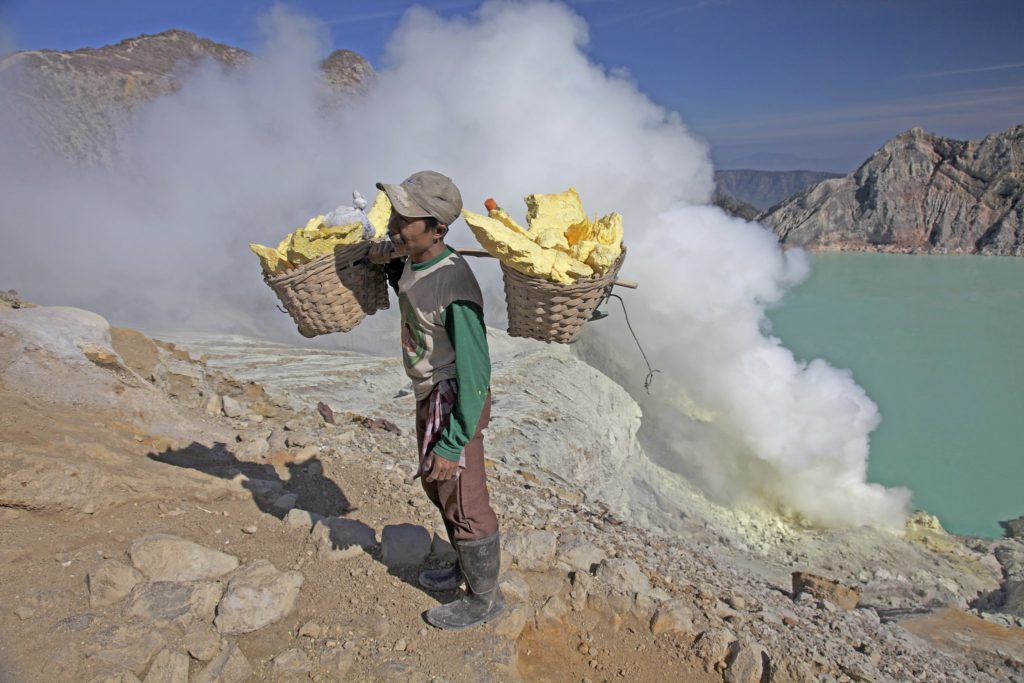
The second occurrence is a one-kilometer-wide caldera lake filled with turquoise-blue water. The color of the water is a result of its extreme acidity and high concentration of dissolved metals. It is the world’s largest highly acidic lake with a measured pH as low as 0.5. The cause of its acidity is an inflow of hydrothermal waters charged with gases from a hot magma chamber below.
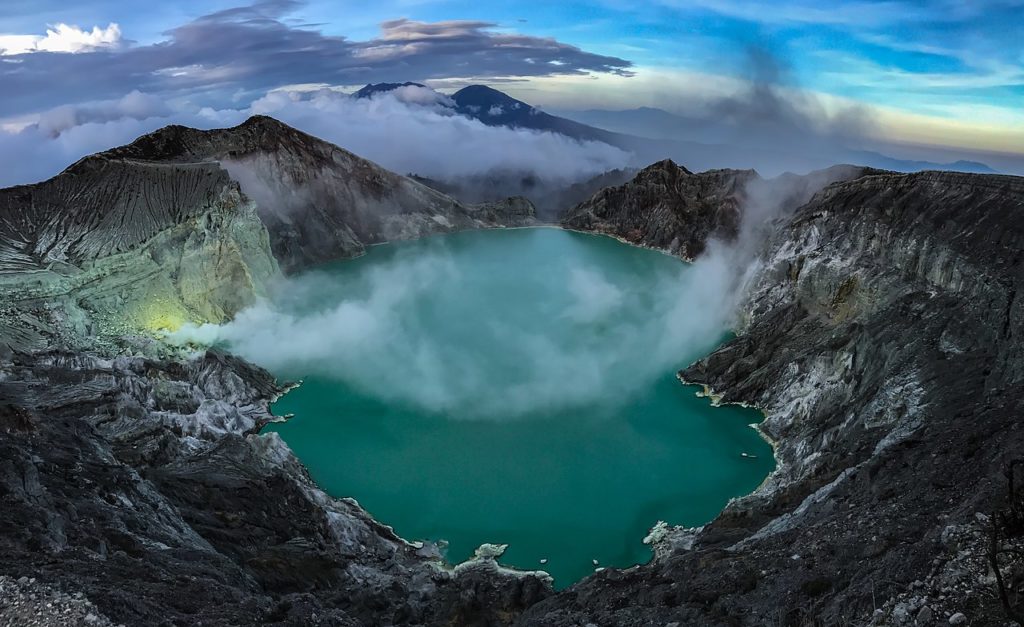
The good news is that the Kawah Ijen lake is pretty easy to visit from Bali and other parts of Indonesia. Most people either visit Mount Ijen on an overnight tour from Bali or do it as a road trip combined with Mount Bromo and other epic sights in East Java.
According to the Internet





